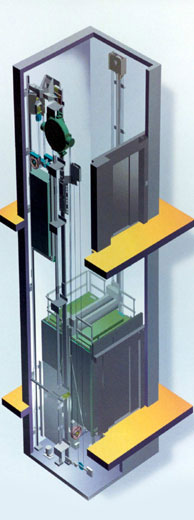|
Safe practices and helpful tips about elevator safety |
"Elevators, escalators and moving walks are the safest form of transportation. Each day in the U.S. and Canada this equipment moves the equivalent of double the entire U.S. and Canadian population - over 210 billion passengers each year. Very few accidents happen and most of these can be avoided."
>> Elevator Escalator Safety Foundation |
How to make your elevator trip safer |
Elevators safely transport millions of people every day. Motion Elevator makes every effort to ensure your safety while riding in elevators maintained by them. Below is some information to help keep you even safer while riding elevators.
- Use care when entering and exiting always look down to make sure the elevator is level with the landing floor to avoid tripping.
- Be aware of the closing elevator doors.
- Do not force any objects and materials into the elevator car.
- Do not continuously hold or block the elevator doors from closing.
- NEVER try to exit a “stuck” elevator unless you are instructed by an elevator mechanic.
- Remain calm and use the in-car emergency devices (telephone or alarm bell).
- Remember, if you’re stuck, someone is on the way to get you out.
- Never use an elevator if the is a building fire. Use the stairs
|
Elevator Cable Misconception |
Each elevator rope is made from several lengths of steel material wound around one another. With this sturdy structure, one rope can support the weight of the elevator car and the counterweight on its own. But elevators are built with multiple ropes (between four and eight, typically). In the unlikely event that one of the ropes snaps, the rest will hold the elevator up.
Even if all of the ropes were to break, or the sheave system were to release them, it is unlikely that an elevator car would fall to the bottom of the shaft. Roped elevator cars have built-in braking systems, or safeties, that grab onto the rail when the car moves too fast.
(information from howstuffworks.com) |
Elevators incorporate several safety features to prevent the car from crashing into the bottom of the shaft. Safeties installed on the car can prevent this type of accident from occurring when the machine brake fails or the wire ropes suspending the car break. However, the inherent design of the safeties render them inoperative in the ascending direction.
In the upward direction, the machine brake is required to stop the car when an emergency condition occurs. Under normal operation, the machine brake serves only as a parking braked to hold the cage at rest. However, when an emergency condition is detected, modern elevator control system designs rely on machine brakes as well as a rope gripper system to stop the car. |
|
 |
|

